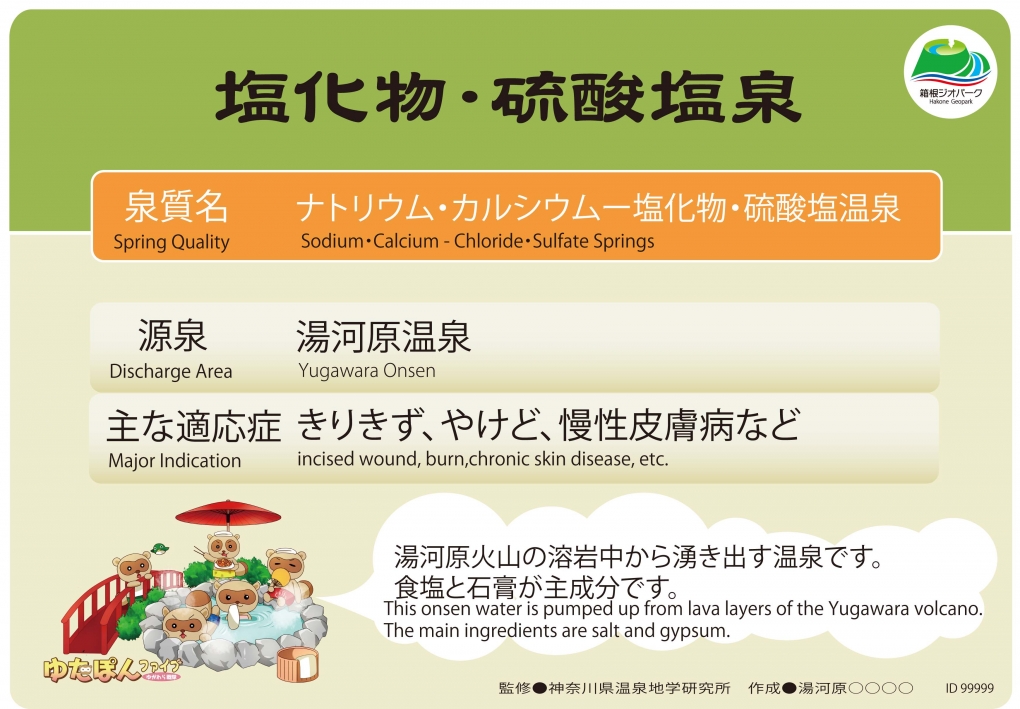Y6 湯河原温泉(ゆがわらおんせん)
~万葉集に登場する温泉~
Yugawara Onsen (Hot Springs)
ジオサイト解説
箱根火山外輪山の一つである湯河原火山では、侵食を受けて広い谷が形成されています。この谷底の藤木川及び千歳川沿いに発達しているのが湯河原温泉です。万葉集でも歌われたこの温泉は、昭和初期の乱掘で枯渇の危機に直面したため、厳しく保護されており、町による集中管理も行われています。開湯伝承には諸説ありますが、万葉集に「あしかりのとひのかふちにいづるゆの」と詠まれたのがこの温泉と伝えられ、歴史の古さを物語っています。
中世には「こごめ湯」あるいは「ここみ湯」と呼ばれました。江戸時代後期には3源泉を数えましたが、1934(昭和9)年に丹那トンネル開通によって東海道線が通過したことにより急速に発展しました。文学者が多く訪れたことや、東京以外で唯一、二・二六事件の舞台となるなど、歴史的な魅力も多い場所です。
These hot springs are located along the Fujikigawa and Chitosegawa rivers.
The oldest Japanese anthology, called Manyoshu (literally “Ten Thousand Poems”), issued in the 8th century, mentions Yugawara Onsen in one of the poems.
These hot springs are rated as highly beneficial to one’s health. The hot springs were ranked very highly during the Edo period (17th to 18th centuries), and they were designated as sanatoriums for army troops during the Russo-Japanese War (1904-1905).
Many writers and artists have also enjoyed this quiet mountain hot spring hideaway.
用語解説
JR東京駅経由でお越しの場合
特急踊り子号:約1時間15分
快速アクティー:約1時間25分
普通電車:1時間45分
JR熱海駅経由でお越しの場合
普通電車で約5分
JR小田原駅経由でお越しの場合
普通電車で約16分

